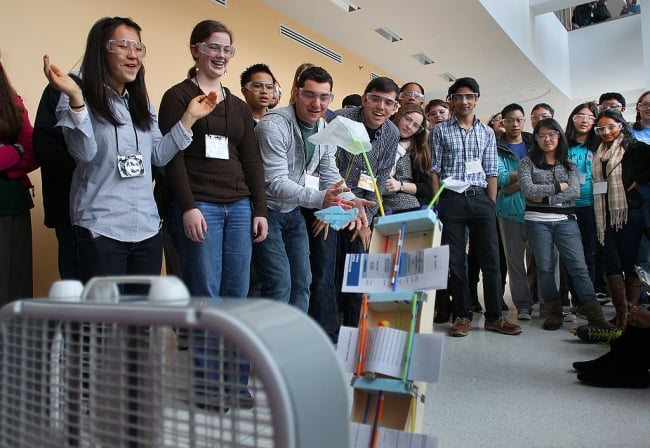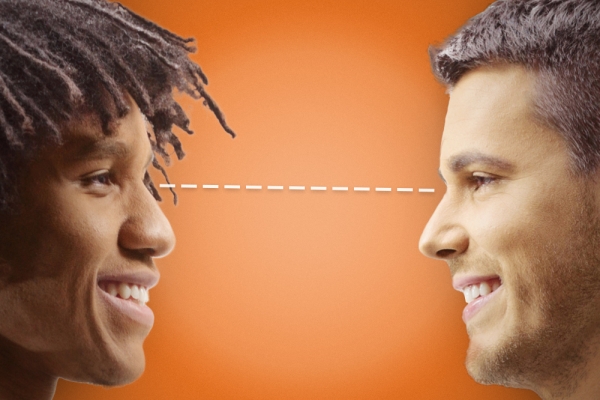[ad_1]
As larger schooling contends with the tip of affirmative motion and a quickly altering admissions panorama, St. John’s School is attempting a novel strategy to the appliance.
Final month the non-public liberal arts establishment in Annapolis, Md., introduced a brand new “discussion-based” software choice that college students can choose over the normal course of. Beginning this fall, candidates can forgo submitting essays or check scores and as a substitute select to be evaluated virtually completely face-to-face, via interviews with admissions counselors and college, in addition to participation in a school seminar.
St. John’s choice to revolutionize its admissions course of is maybe unsurprising in mild of its unorthodox strategy to schooling. The 300-year-old faculty doesn’t provide conventional majors; as a substitute, all college students comply with one widespread interdisciplinary curriculum that includes 200 “nice books” from Plato’s Republic to James Baldwin’s The Fireplace Subsequent Time. Its college students, affectionately known as Johnnies, have a status for reveling in debate for its personal sake, incomes St. John’s the epithet “most contrarian faculty in America,” which it has embraced wholeheartedly.
Benjamin Baum, St. John’s director of admissions, stated the brand new software choice aligns with the school’s distinct evaluation insurance policies, that are largely primarily based on in-class discussions, and that he hopes the method will appeal to the sorts of scholars who would thrive there.
“It’s definitely a giant departure … however most schools’ purposes look similar to one another, and till not too long ago so did ours—even if we consider ourselves as being a really completely different type of establishment,” he stated. “So we thought, let’s break the mould.”
It’s a daring experiment, however as establishments throughout larger schooling grapple with the brand new admissions setting, St. John’s concentrate on high-contact, customized analysis might show to be extra of a bellwether than an oddity.
Given the confusion about easy methods to establish or deal with admissions essays written by ChatGPT, the affect of pandemic studying loss on faculty readiness and the Supreme Courtroom’s choice putting down affirmative motion, evaluating faculty candidates is prone to be extra fraught than ever this admissions cycle. Some admissions officers consider bypassing the normal software in favor of a extra private strategy might have advantages for a variety of establishments.
“There are definitely latest modifications within the panorama that would result in extra sturdy utilization of those instruments,” stated David Hawkins, chief schooling and coverage officer for the Nationwide Affiliation for School Admission Counseling.
Baum stated college students can full the dialogue evaluation over Zoom in the event that they select, however he hopes that many will reap the benefits of the monetary help St. John’s makes out there to journey to certainly one of its two campuses—there may be one in Santa Fe, N.M., in addition to Annapolis—to get an in-person really feel for the school’s distinctive pedagogy. As a result of the admissions course of is rolling, St. John’s has already obtained a couple of dozen purposes for the Class of 2028 and may start admitting college students this month.
Officers nonetheless have kinks to work out, together with easy methods to evaluate a standard applicant with one collaborating within the discussion-based evaluation. However Baum stated that’s the character of experimentation, and if there have been a time to leap into virgin territory, he believes it’s now.
Bypassing the ‘Black Field’
In line with a NACAC ballot of latest and present faculty candidates launched final month, almost two-thirds of respondents stated they felt like “only a quantity” whereas making use of. One good thing about high-contact admissions practices is that they offer faces and personalities to an in any other case impersonal software file, Baum stated.
“Most schools’ purposes are mainly a black field, the place you submit into the void and look ahead to a solution,” he stated. “For us, will probably be a way more dynamic course of.”
Susan Hartley-Brisson, dean of admissions for Olin School, expressed an analogous sentiment. Olin, a small engineering faculty in Needham, Mass., flies potential college students to campus as a part of its admissions course of and has executed so since its founding in 1997.
After receiving purposes however earlier than making admissions selections, Olin invitations about 250 candidates to remain on campus for Candidates Weekend, the place they meet present college students, take particular courses and get a way for the mental and social lifetime of the establishment. In addition they endure two in-person evaluations: a person interview with an admissions counselor and a bunch train noticed by members of the admissions crew.
Hartley-Brisson stated the school makes exceptions for worldwide college students or these with different obligations, but it surely vastly prefers that invitees make the trek to Needham.
“We really feel that it’s in all people’s finest curiosity to have them come and see what Olin is all about, as a result of it’s going to be completely different than what they could expertise at another establishment,” she stated. “And it provides us a possibility to see them in motion.”


Olin School candidates at a 2012 “candidates weekend” on the Needham, Mass., campus.
John Tlumacki/The Boston Globe through Getty Picture
Excessive-contact practices is also a extra equitable approach of assessing candidates. Baum stated the thought for a discussion-based admissions choice began germinating this summer season, across the time the Supreme Courtroom handed down its affirmative motion choice. And whereas he insists that wasn’t the impetus for the brand new coverage, he stated the ruling “weighed closely” on how his crew thought of implementing it.
The discussion-based choice was designed partly for underrepresented college students who would possibly really feel much less snug with the normal software, he stated—possibly as a result of they arrive from underresourced excessive faculties with few counselors and poor faculty prep programs or are first-generation college students whose dad and mom don’t have expertise making use of to school.
“I’ve seen essays prior to now that weren’t profitable faculty admissions essays, and but after we get these college students in dialog, we uncover there’s a lot potential for them to succeed,” he stated. “This can be a mechanism for reaching these college students and enabling them to essentially shine.”
Hawkins expressed much less certainty that high-contact practices are the easiest way to extend entry, citing the price and problem for a lot of college students of visiting a faraway campus or making ready to impress a graduate in an interview. Nonetheless, he acknowledged the potential advantages, noting that proper now, any change is welcome.
“Traditionally, interviews and visits to campus are inclined to tilt the enjoying area ever so barely away from fairness,” he stated. “However I don’t wish to draw any vibrant strains. The admissions system as an entire is basically inequitable, so now could be the time to take aside the whole machine and rebuild it with fairness because the purpose.”
A Particular Case or a Rising Development?
Interviews and campus visits aren’t sometimes weighed very closely in admissions standards. A 2023 NACAC survey of member schools discovered that 54 p.c stated such elements had been of “no significance” to admissions selections, and solely 13 p.c stated they had been of appreciable or average significance.
However latest developments could lead on admissions officers to take a second take a look at face-to-face software parts. Considerations about ChatGPT have fearful admissions officers since March, and that is the primary fall candidates might use the unreal intelligence device for writing private essays; a mannequin like St. John’s, Baum stated, makes the device irrelevant.
And with race-conscious admissions now unlawful, face-to-face connections might assist schools get across the problem of figuring out an applicant’s id primarily based on their written software, which might permit establishments to proceed constructing numerous courses.
“I firmly consider many schools shall be exploring new methods to see the entire college students, particularly after the Supreme Courtroom ruling,” Hawkins stated.
There are some variations between the approaches at Olin and St. John’s. The previous is explicitly centered on STEM, whereas the latter is dedicated to humanities and the classics; Olin is extremely selective, whereas St. John’s admits simply over half of its candidates. But in different key methods the 2 are very comparable: small, non-public schools with the sources and leeway to experiment with their admissions insurance policies, and with distinctive approaches to schooling they’re eager to let college students expertise earlier than making use of.
However are high-contact admissions practices possible for a broader swath of establishments?
Baum stated that discussion-based or in-person evaluations won’t be the precise match for all establishments, however the second requires extra experimentation in admissions.
“This isn’t an inexpensive or easy mannequin, but it surely could possibly be a robust device for small liberal arts faculties,” Baum stated. “On the finish of the day, this works for St. John’s as a result of it’s who we’re; it’s a mirrored image of our personal id. I hope that we’re in a second of innovation the place schools are reflecting on how their id is represented of their admissions course of.”
[ad_2]

